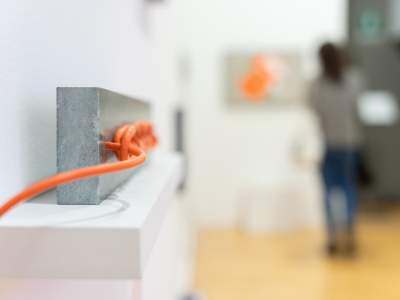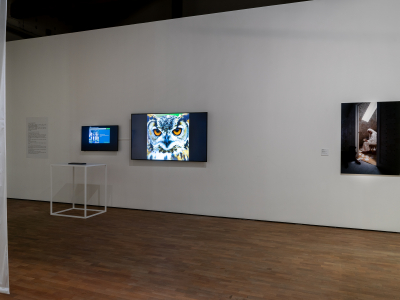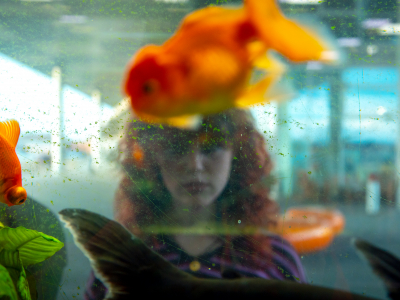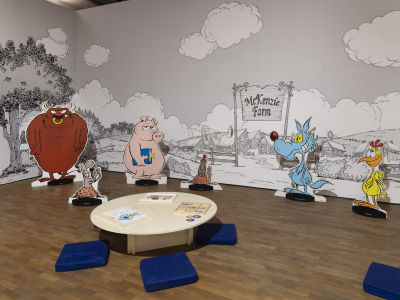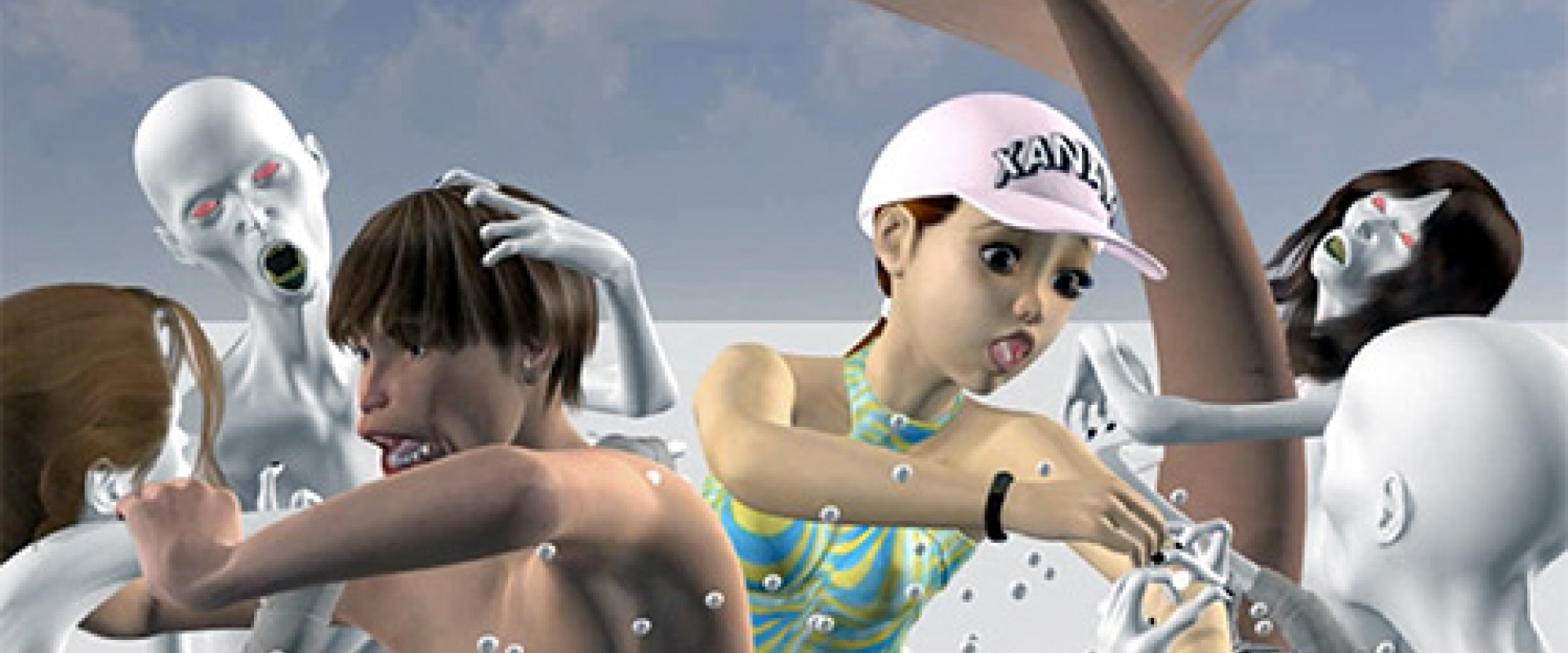Il viaggiatore mentale is the first extended solo exhibition by Jon Rafman in an Italian contemporary art institution, curated by Diana Baldon and presented by Fondazione Fotografia Modena together with Galleria Civica di Modena on occasion of festivalfilosofia, whose theme this year is Truth.
The exhibition brings together a selection of multimedia installations by the Canadian artist, presented in Italy for the first time, dating from 2011 to the present day.Using different languages and media, which go from photography to video, sculpture to installations, Rafman investigates the increasing merging between reality and its simulation in contemporary society through works that blur the boundaries between the material and the virtual. Born in 1981 in Montreal where he lives and works, after studying Philosophy and Literature at the McGill University, Jon Rafman graduated in Film, Video and New Media at the School of the Art Institute of Chicago.Since his early work, the artist has concentrated on the consequences of using technology on our perception of reality.To create Kool-Aid Man (2008-11) he was active on the virtual platform Second Life for three years, discovering the innumerable and multiple representations of the platform’s digital “inhabitants” using an avatar that gave the work its name.Rafman refrains from judging or criticizing the inhabitants of Second Life because he wants to show how technology enables people to create new representations of self inside an imaginary world, giving them the freedom to mould new identities and iconographies.
The Internet and its many digital communities were used by the artist as an image archive for his Betamale Trilogy (created between 2013 and 2015), a video consisting of the installations Still Life (Betamale), Mainsqueeze and Erysichthon, both displayed in the exhibition. In the novels by Georges Bataille, the claustrophobic and destructive space of the writing results in the story’s implosion, multiplying the narrative levels and their representations. Similarly, in the Betamale Trilogy videos, you get the impression of being trapped and drawn into a spiral of alienating situations.Rafman skilfully represents the ambiguous seductive power of the web, which appears to promise freedom and worlds to discover, while, in fact, imprisoning users in a space designed by algorithms and companies that draw data from users to then sell it on. Jon Rafman immerses himself in the online web, even venturing into the most hidden corners of the “deep web”. This allows the artist to perform the role of amateur anthropologist and digital flâneur, investigating the epistemic collapse that has taken place over the last few years, through the erasure of the distinction between the digital and analogue world, between reality and its virtual representation. In his videos, a poetic and hypnotic off-screen voice always accompanies the images which are taken from sequences selected from the Internet, videogames or online chat forums.
Memory is one of the themes at the heart of many of his works.In A Man Digging (2013) consisting of sequences taken from video games, including Max Payne 3, the main character speaks of the inherent changeability of memory, because the latter is an experiential device allowing us to rewrite personal and collective histories. While the narrator goes off track, searching nostalgically for his fragmented past, Rafman takes us through the sparkling surface of memory towards the limits of reality.The video Remember Carthage (2013) tells the story of a man who boards a ship headed to Tunisia in search of a city in the Sahara Desert that existed in the era of Carthage.Even though this legendary place was known as the “Las Vegas of Maghreb", no trace of it remains.In the video, consisting of sequences taken from both Second Life and the video game Uncharted 3, a voiceover meticulously describes the sublime architectural beauty of ancient civilizations. Remember Carthage not only explores the theme of memory, but also confronts the contemporary nature of History because, as a result of modern technologies such as those used for video games and Second Life, even the past can take on new forms and exercise a renewed influence. The video Dream Journal 2016-2017, arising from the artist’s practice of transforming his dreams into videos using amateur 3D software, is accompanied by a soundtrack composed by James Ferraro and Oneohtrix Point Never, with whom the artist had already collaborated.The two female protagonists – one of them an archetypical millennial, the other a kid-warrior – embark upon a Dantean journey that assumes the features of a dystopian universe.The storyline is interposed by imaginary situations with classical epic tropes which create a series of nightmarish and surreal situations: it is a visualization of the artist’s unconscious, intensified by his Internet use.
At the entrance to Palazzina dei Giardini, visitors to the exhibition are met by one of Jon Rafman’s most recent works, Legendary Reality (2017), in which the artist takes us on a journey into “inner space”.An anonymous narrator recounts an imaginary journey through what appears to be a science fiction landscape, but could easily be what we see on our computer screens, where detailed historical representations are augmented by virtual experiences.



